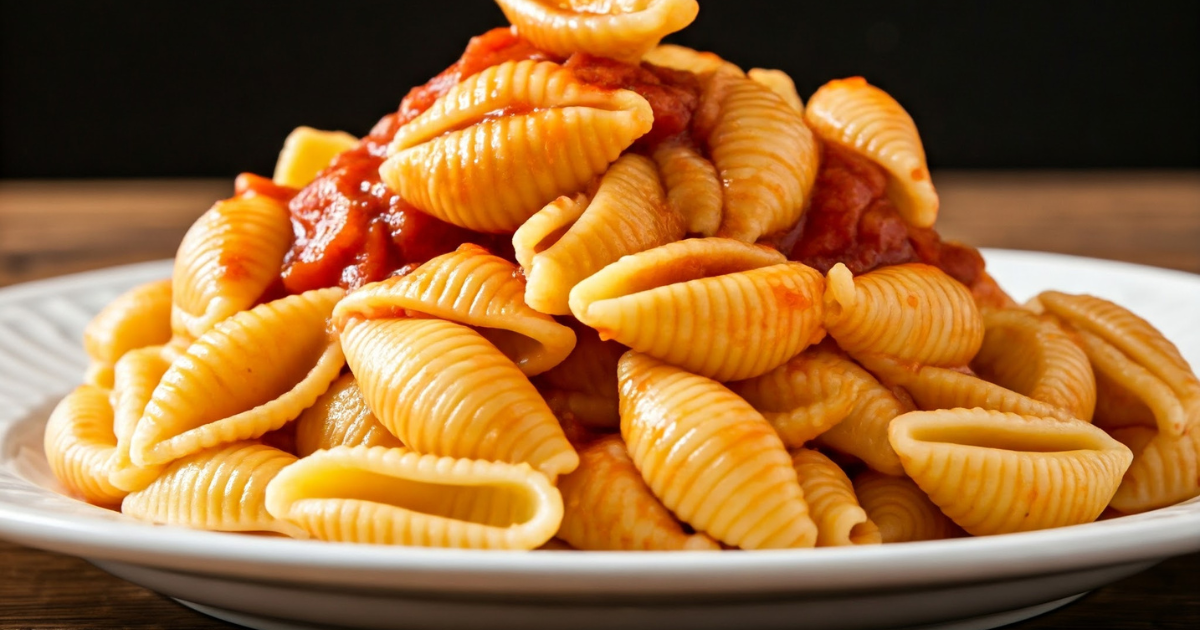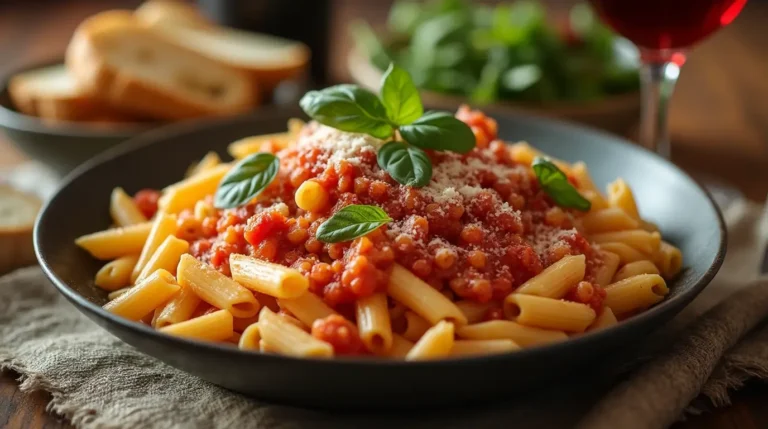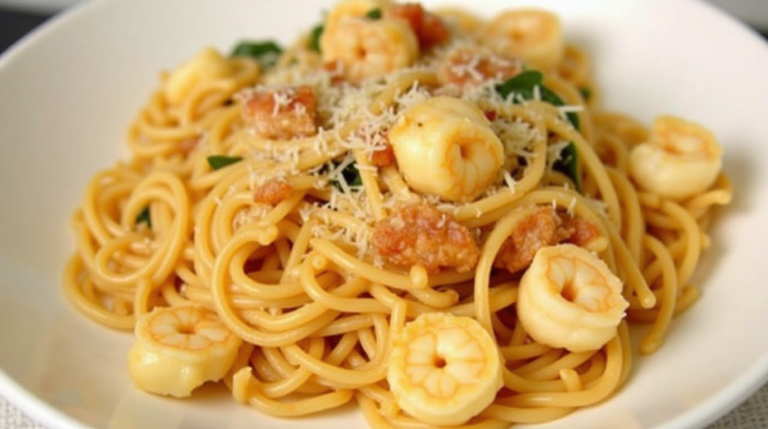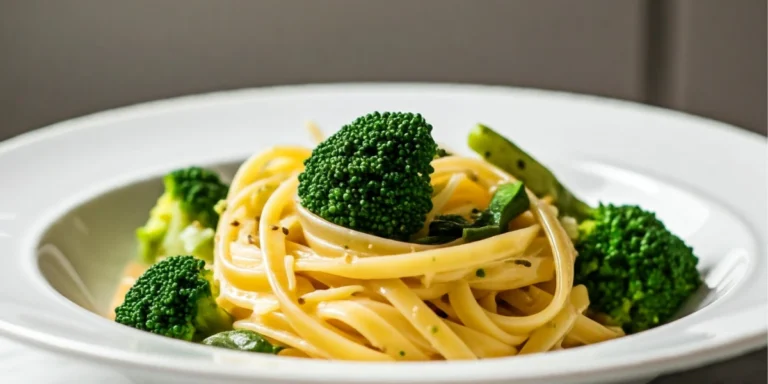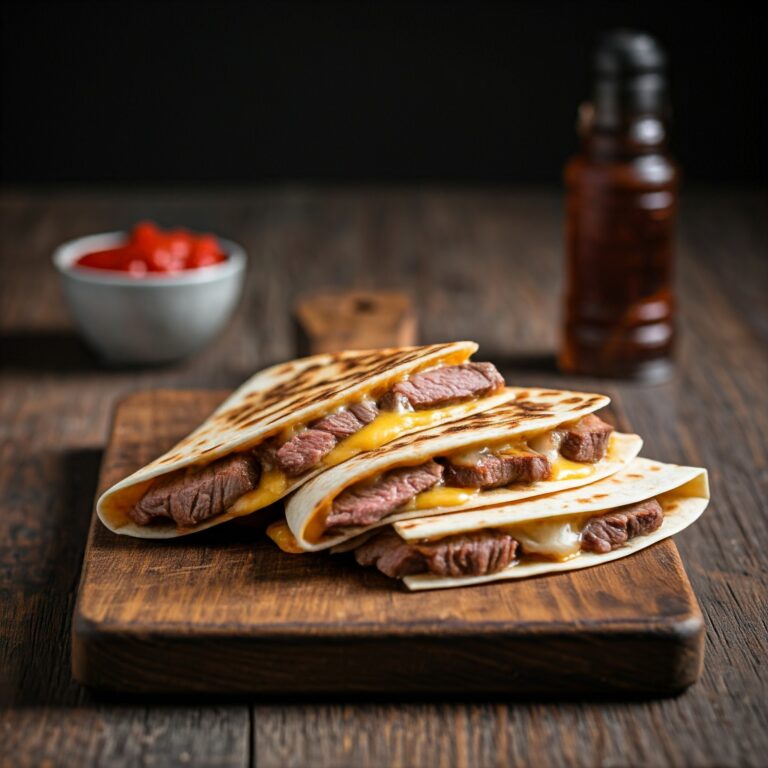Classic Ditalini Pasta Recipe – Easy Italian Comfort Food
Table of Contents
Imagine a steaming bowl of pasta, perfectly al dente, coated in a rich, flavorful sauce. This is the essence of the classic ditalini pasta recipe. It comes from Italy and has won the hearts of many, becoming a favorite in American homes. But what makes ditalini pasta so versatile and comforting?
In this article, we’ll explore the rich history and cultural importance of ditalini. We’ll also look at its different forms and nutritional benefits. Most importantly, we’ll show you how to make a delicious ditalini pasta dish. It will take you straight to the cozy trattorias of Italy, from your own kitchen.
Key Takeaways
- Ditalini pasta is a classic Italian pasta shape with a rich history and cultural significance.
- This versatile pasta can be used in a variety of dishes, from hearty stews to creamy baked dishes.
- Ditalini pasta is a healthy choice, offering a good source of complex carbohydrates and essential nutrients.
- The classic ditalini pasta recipe is easy to prepare and can be customized to suit individual taste preferences.
- Serving ditalini pasta with the right accompaniments can elevate the dish and create a truly satisfying Italian-inspired meal.
Understanding Ditalini: A Traditional Italian Pasta Shape
Ditalini is a beloved pasta shape in Italian cooking. It has a long history and deep cultural meaning. This small, tube-shaped pasta comes from Italy’s heart and is a key part of its food traditions.
Origins and Cultural Significance
Ditalini comes from Tuscany and Emilia-Romagna. It’s been a favorite in local meals for many years. The name “ditalini” means “little fingers” in Italian, reflecting its shape and size.
This shape not only looks good but also works well. It holds onto sauces perfectly, blending flavors in every bite.
Types and Variations of Ditalini
- Traditional Ditalini: The classic, smooth-textured ditalini made from durum wheat semolina flour.
- Whole Wheat Ditalini: A healthier choice, made with whole wheat flour for more fiber and nutrients.
- Gluten-Free Ditalini: For those with dietary needs, gluten-free ditalini is made with grains like rice or corn.
Nutritional Profile of Ditalini Pasta
Ditalini pasta is nutritious, like other Italian pasta shapes. It’s a good carb source for energy and has some protein. It’s also low in fat, making it a healthy pasta choice for a balanced diet.
| Nutrient | Ditalini Pasta (100g) | Whole Wheat Pasta (100g) | Gluten-Free Pasta (100g) |
|---|---|---|---|
| Calories | 371 | 353 | 400 |
| Carbohydrates | 74g | 71g | 81g |
| Protein | 13g | 14g | 8g |
| Fiber | 3g | 6g | 4g |
Essential Ingredients for Perfect Ditalini Pasta Recipe
To make a perfect ditalini pasta dish, you need high-quality ingredients. This classic Italian comfort food is built on a few key components. They work together to create a dish full of flavor.
The pasta, ditalini, is at the heart of the recipe. It’s a small, tube-shaped pasta from Italy’s Campania region. Choose ditalini made from premium durum wheat for a firm texture and a strong bite.
Pair your ditalini with fragrant Italian herbs like fresh basil, oregano, and rosemary. These herbs add a unique Italian taste to the dish. Also, use quality olive oil for depth and richness in the flavor.
Adding a sprinkle of freshly grated Parmigiano-Reggiano cheese elevates the dish. This cheese’s nutty, umami flavor complements the pasta and herbs perfectly.
By using these key pasta ingredients, you’ll make a ditalini pasta dish that feels like Italy. Your taste buds will thank you.
Step-by-Step Cooking Instructions
Making the perfect ditalini pasta dish is all about following a few key steps. This guide will help you achieve al dente pasta and rich, authentic Italian flavors.
Preparing the Base
Start by boiling a large pot of salted water. This ensures your ditalini pasta cooks evenly and keeps its texture. While the water heats up, mix your base sauce with quality Italian ingredients like crushed tomatoes, garlic, onions, and olive oil.
Cooking Techniques
When the water boils, add the ditalini pasta gently and stir occasionally. It’s important to watch the cooking time closely and taste the pasta often. Ditalini usually takes 8-10 minutes to cook, but this can vary based on the pasta’s brand and size.
Tips for Al Dente Perfection
- Use a large pot with plenty of water to let the ditalini move freely.
- Put the pasta in boiling water and keep the simmer steady.
- Check the pasta a minute or two before the recommended time for the perfect al dente.
- Don’t overcook, as ditalini can become mushy if cooked too long.
- Drain the pasta right when it’s done, saving some of the starchy cooking water.
By using these pasta cooking tips and techniques for al dente pasta, you can make your homemade ditalini truly special. It will taste like authentic Italian cooking.

Serving Suggestions and Pairings
Ditalini pasta is a versatile Italian staple. It’s great for many dishes, from comforting weeknight meals to fancy dishes for guests. These tips will make your ditalini dishes stand out.
Pairing ditalini with Italian wine is a classic choice. A crisp white wine like Pinot Grigio or Sauvignon Blanc complements its flavor. A bold red like Chianti or Montepulciano adds a rich contrast.
Ditalini goes well with many side dishes. Try it with a fresh salad and balsamic vinaigrette or roasted veggies like asparagus and zucchini. For a hearty meal, pair it with grilled chicken, Italian sausage, or sautéed shrimp.
To make your ditalini look great, add some garnishes. Freshly grated Parmesan cheese, chopped parsley, or a drizzle of olive oil can make a big difference. These simple touches can turn a basic dish into a feast for the eyes and taste buds.
| Pasta Pairings | Italian Wine | Side Dishes | Garnishes |
|---|---|---|---|
| Ditalini | Pinot Grigio, Sauvignon Blanc, Chianti, Montepulciano | Salad, Roasted Vegetables, Grilled Chicken, Italian Sausage, Sautéed Shrimp | Parmesan Cheese, Parsley, Olive Oil |

Conclusion
The classic ditalini pasta recipe shows Italy’s rich culinary heritage. It’s a versatile pasta shape that brings comfort, whether in traditional Italian dishes or modern American cuisine.
The ditalini recipe is simple, with just a few key ingredients. It shows the beauty of Italian cooking. By making this dish, home cooks can enjoy the depth of Italian cuisine and the endless possibilities of pasta.
Try ditalini pasta with a classic tomato sauce, in a hearty soup, or with your own flavors. This recipe will become a favorite in your kitchen. Share your experiences with friends and family. Buon appetito!
FAQ
What is ditalini pasta?
Ditalini pasta is a traditional Italian shape that looks like small tubes. It’s great in soups, casseroles, and more.
What are the origins of ditalini pasta?
Ditalini pasta comes from Italy, especially Tuscany and Emilia-Romagna. It’s been loved in Italian kitchens for years.
What are the different types of ditalini pasta?
You can find ditalini in whole wheat, gluten-free, and special varieties. These options meet different tastes and needs.
What are the nutritional benefits of ditalini pasta?
Ditalini pasta is full of complex carbs, fiber, and vitamins and minerals. It’s a healthy choice for a balanced diet.
How do I cook ditalini pasta perfectly?
To get the perfect al dente, follow the cooking guide closely. Pay attention to time and water temperature. Don’t forget to drain and toss with sauce.
What are some popular ways to serve ditalini pasta?
Ditalini pairs well with tomato, pesto, or creamy sauces. It’s also great in soups, casseroles, and baked dishes. Add fresh herbs, Parmigiano-Reggiano, and olive oil for extra flavor.
Can I substitute ditalini pasta in other pasta recipes?
Yes, you can use ditalini instead of elbow macaroni or tubetti in many recipes. Its texture and shape fit well in Italian dishes.

